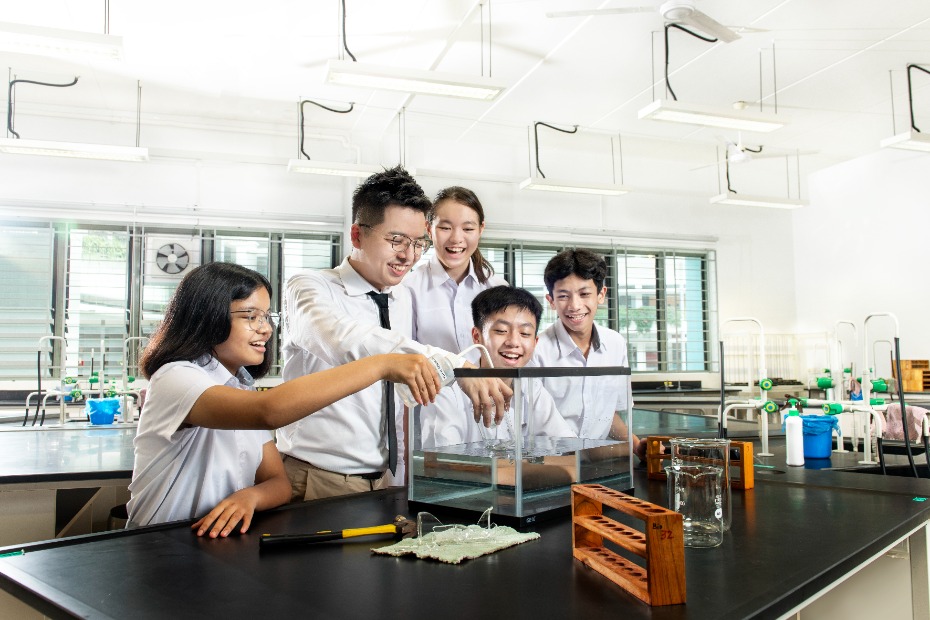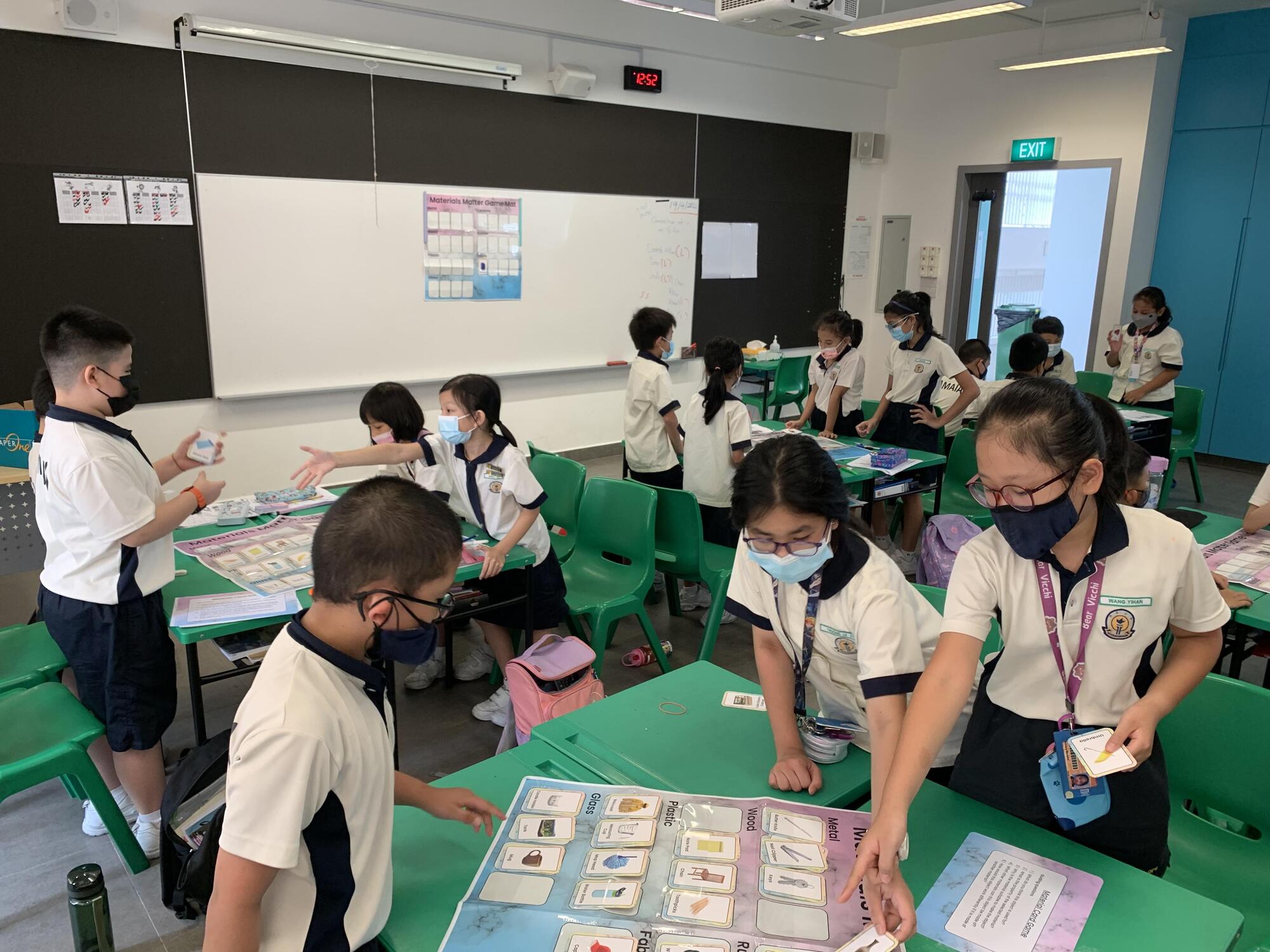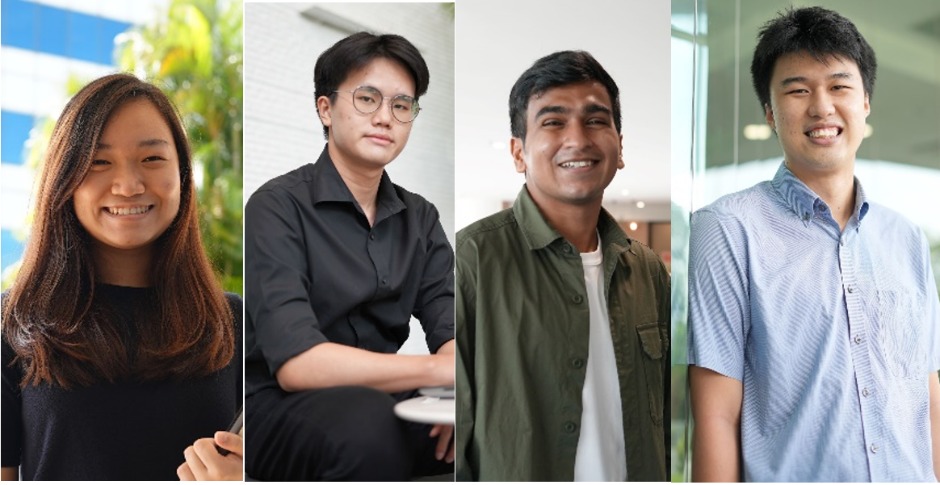Rolling out Robots to Reach a Royal Tomb
02 Aug 2011
An Egyptian pharaoh died and was entombed in the Valley of the Kings. Centuries later, a group of young adventurers pored over clues to calculate the surest way to reach the pharaoh’s crypt while avoiding a myriad of booby traps. These youths are neither time travellers nor tomb raiders, but students from Westwood Secondary School who employed their knowledge of Physics to manoeuvre robots through a tricky and treacherous maze.
The tomb of King Tutankhamun, recreated in miniature and designed to challenge budding explorers, provided an hour of excitement and practical education on 21 July, when Westwood Secondary School held its annual Science Day. Physics, Chemistry and Biology all came into play as teams of Sec 2 students raced to unveil the Golden Mask of King Tutankhamun by using Lego robots to navigate a mock tomb chamber.
“Robotics is a tool of engagement to capture and hold the students’ attention,” explained Mr Chng Puay Keong, the school’s Head of Physics. The brains behind the school’s Science Robotics Enrichment Programme, Mr Chng organises this annual workshop to give students an introduction to robots as well as the chance to work together and solve a problem by drawing upon their grasp of the three sciences. As they unravel each piece of the puzzle, each team also constructs and programmes a robotic vehicle that can overcome obstacles and attain their goal.
Work like an Egyptian
There was a palpable air of anticipation as the students entered the workshop room, which was set up with notebook computers linked to robots on each desk. With curious expressions, they checked out the devices and pondered over a maze that leads to a tomb entrance guarded by three figurines.
A documentary on the life and mysterious death of King Tutankhamun provided a brief distraction from the entrancing robots. Mr Chng then took the students through a visual that gave the location co-ordinates of the king’s tomb and provided a 3-D rendering of the burial chamber from different perspectives. Physics was the focus of this particular session, but Mr Chng explained that other sciences can be woven in as well; for instance, students might have to show the genetic impact of a disease called Scoliosis on King Tutankhamun’s descendants. Or they could be asked at one point in the challenge to apply the mole concept to determine the result of a chemical reaction.
To open the tomb entrance, one had to apply a force of at least 12 newtons on a pressure plate at the end of a winding tunnel. “The tunnel is very small, so you have to send your robots in to locate the pressure plate and apply the necessary force,” Mr Chng told his rapt audience. But before they could deploy the robots, each team had to calculate the number of iron bars they needed to deliver the exact force.
Tapping on their Physics lessons, the students tried to recall the formulae they could use to derive the correct answer. Mr Chng offered a few hints and the students responded by whipping out their calculators to check if their mental arithmetic was on the right track. Having cracked the first clue, Sec 2 student Khairuddin bin Ali exclaimed, “Honestly, we did this in Physics class some time ago, but we were a bit blurry about it by now! But this really helped us to grasp the Physics concepts more quickly.”
After gaining access to the tomb, the students had to figure out how to bypass the three guardians and enter the inner chamber. Each statuette stood before a box that was also a pressure plate. The statuettes had to be pushed against their pressure plates in a specific sequence – starting with the one having the highest density. However, the density of each figurine was given in different units of measurement, which the students had to convert into a common unit of measure before deploying their robots to do the heavy work.
A rolling good time
Besides getting a primer to ancient Egypt and a refresher course in physics, the students gained an insight into the principles of robotics through the Lego Mindstorm NXT, a tool kit used to programme small robots. Instructing the robots to cover specific distances and make turns at the right spots was harder than it seemed, and often enough, the ‘bots’ crashed into walls or missed their marks, sending the teams back to their keyboards to recalibrate the commands.
Upping the ante further was a requirement that each team build an arm for their robot to push the statuettes. This set the students on a quest to design an arm strong enough to perform the task and yet light enough to be manipulated.
Given this array of quandaries, the students had to make several attempts before their robots could accomplish the task. It was no surprise that the students were visibly elated when they completed their ‘treasure hunt’; many were reluctant to part from the robots, with some grabbing the chance to snap a photo with their mechanical partners in learning.
“It was easier than I imagined it would be,” recounted Khairuddin, who had joined the workshop as he was interested in robotics. “I was very surprised that the robots were connected to normal notebook computers and the programme was very usable.” Professing a different motivation, Khairuddin’s teammate Ng Zhi Yang said, “I signed up because I am interested in computer games. When our robots had to travel through the maze, it was like a game. It was a good session and good fun!”
For Mr Chng, such enthusiasm arising from the combination of diverse interests and different disciplines is just what the programme seeks to achieve. “This workshop is intended to stretch our students,” he explained. “Besides teaching them science, we also wanted to emphasise on developing thinking skills and creativity and Robotics came in handy.”








.jpg)


